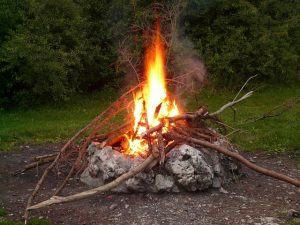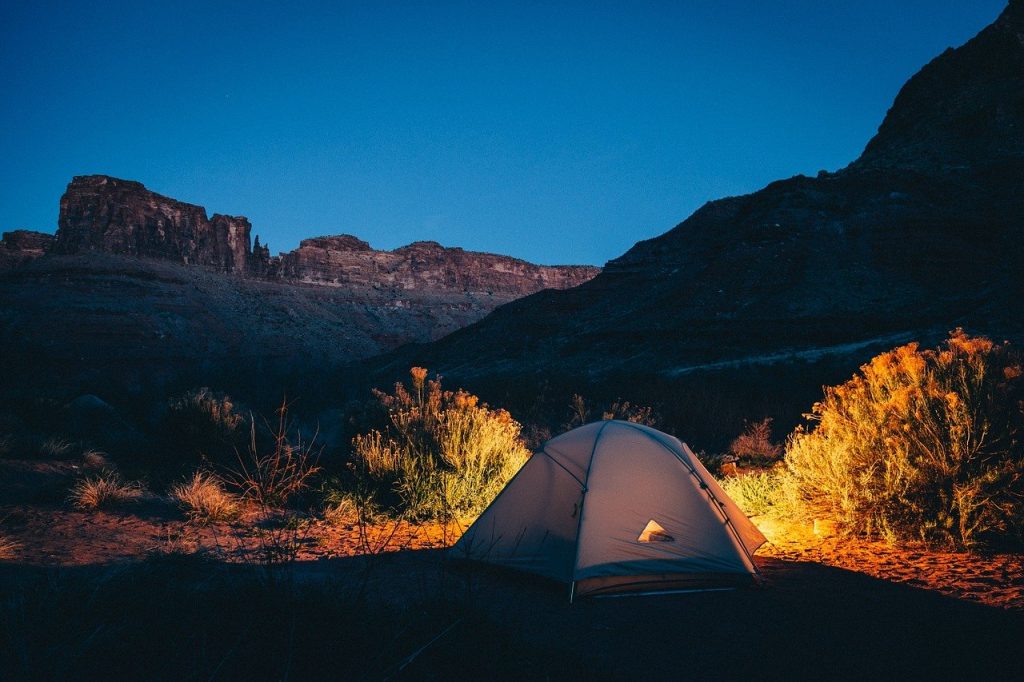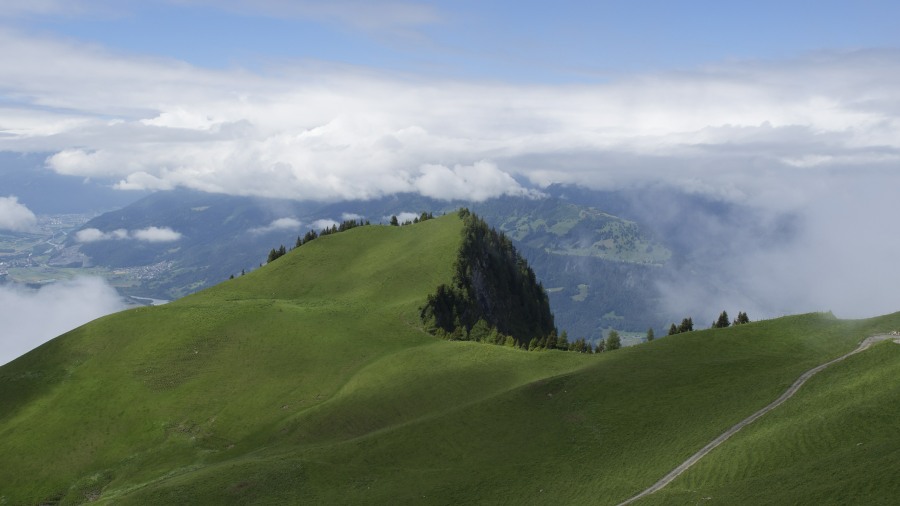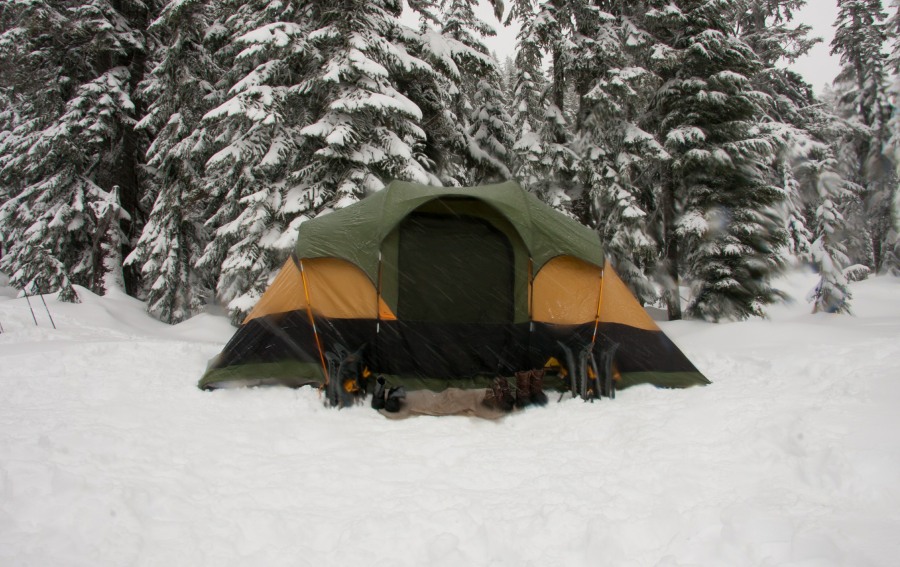Camping Out or Camping In
 Whether you are camping out in the wilds or your back garden or even stuck in the house for some reason, it is always useful to have foods available that don’t need cooking, or at least minimal cooking. You may be tired after a long day hiking or playing, or you may be low on fuel or you may not even have been able to get to the shops to get food. Keeping a box or bag of non-perishable staples means you’re not stuck in an emergency, especially if you have children to feed. You may have your own favorite staple foods you keep handy all the time, such as cereals and crackers. If you can add a few more, you can even make a complete meal from them.
Whether you are camping out in the wilds or your back garden or even stuck in the house for some reason, it is always useful to have foods available that don’t need cooking, or at least minimal cooking. You may be tired after a long day hiking or playing, or you may be low on fuel or you may not even have been able to get to the shops to get food. Keeping a box or bag of non-perishable staples means you’re not stuck in an emergency, especially if you have children to feed. You may have your own favorite staple foods you keep handy all the time, such as cereals and crackers. If you can add a few more, you can even make a complete meal from them.
Non-Perishable Staple Foods
These are essential for emergency preparedness, ensuring you have access to nutritious options even when fresh food supplies are limited or you can’t get out.
- Canned Beans: Beans such as black beans, kidney beans, chickpeas, and lentils are versatile and rich in protein and fiber. They can be eaten cold or heated if possible.
- Canned Vegetables: Canned vegetables like corn, peas, green beans, and tomatoes (whole or chopped) are convenient options for adding nutrition to meals without the need for refrigeration.
- Canned Fish: Tuna, salmon, and sardines packed in water or olive oil provide protein and healthy fats. They can be eaten straight from the can or used in salads, sandwiches, or pasta dishes.
- Canned Fruit: Opt for canned fruits packed in water or their own juice, such as peaches, pears, pineapple, or mandarin oranges, for a sweet and nutritious treat without added sugar.
- Dried Pasta: Pasta is a versatile staple that can be stored for long periods. Pair with canned sauces, vegetables, or protein sources for a hearty meal.Pasta will require cooking but is usually ready in 10 – 15 minutes.
- Rice: Rice is a pantry staple that provides a good source of carbohydrates. Keep both white and brown rice on hand for variety. Again, this will need cooking. By soaking the rice for at least 30 minutes before cooking, you can reduce cooking time.
- Quinoa: Quinoa is a nutritious grain that cooks relatively quickly and can be eaten cold or added to salads, soups, or stir-fries.
- Oats: Oats are a filling breakfast option that can also be used in baking or as a base for homemade granola bars.
- Cereal: Keep a variety of whole grain cereals on hand for a quick and easy breakfast option. Choose options with minimal added sugars for better nutrition.
- Nut Butter: Peanut butter, almond butter, or other nut butters provide protein and healthy fats. Spread on bread or crackers or use as a dip for fruits and vegetables.
- Dried Fruit: Dried fruits like raisins, apricots, or cranberries are shelf-stable and make for a convenient snack or addition to oatmeal or trail mix.
- Nuts and Seeds: Nuts and seeds are nutrient-dense and provide healthy fats, protein, and fiber. They can be eaten on their own or added to salads, yogurt, or cereal.
- Granola Bars: Granola bars are convenient for on-the-go snacking and provide a quick source of energy.
- Shelf-Stable Milk: Shelf-stable milk, such as boxed or powdered milk, can be stored at room temperature until opened. It’s a versatile ingredient for cooking or as a beverage.
- Bouillon Cubes or Broth: Bouillon cubes or broth can add flavor to soups, stews, and rice dishes without the need for refrigeration.
- Coconut milk is handy as a drink or for use in cooking to make a tasty sauce.
By keeping these non-perishable staple foods on hand, you can ensure that you have nutritious options available for emergency meals, even when fresh food supplies are limited. Be sure to regularly check expiration dates and rotate your stock to maintain freshness. More info on emergency food here.
No Cook Food
When discussing foods that do not need to be cooked, it’s important to note several key points:
- Nutritional Value: Many raw foods retain their maximum nutritional value because cooking can sometimes break down certain vitamins and nutrients. Examples include fruits, vegetables, nuts, and seeds.
- Convenience: Preparing uncooked foods often requires minimal time and effort, making them convenient options for quick meals and snacks, as well as saving on fuel.
- Safety: Raw foods carry a risk of foodborne illnesses if not handled properly. It’s crucial to practice good food hygiene, including washing produce thoroughly and avoiding cross-contamination.
- Variety: There is a wide range of uncooked foods available, providing ample choices for different tastes and dietary preferences. This includes salads, sushi, fresh fruit, crudites with dips, and more.
- Texture and Flavor: Raw foods often have a distinct texture and flavor profile that differs from cooked versions. For example, raw vegetables may be crunchier and more vibrant in flavor compared to their cooked counterparts.
- Cultural Significance: Many cuisines around the world incorporate raw foods as essential components of traditional dishes. Examples include ceviche in Latin American cuisine and sashimi in Japanese cuisine.
- Digestive Benefits: Some people believe that consuming raw foods can have digestive benefits, such as improved digestion and nutrient absorption, although scientific evidence supporting these claims is limited.
- Potential Drawbacks: While raw foods offer numerous benefits, they may not be suitable for everyone. Certain individuals, such as those with weakened immune systems or specific health conditions, may need to exercise caution or avoid raw foods altogether.
- Storage: Raw foods typically have shorter shelf lives compared to cooked foods, so proper storage is essential to maintain freshness and prevent spoilage. Refrigeration or other appropriate storage methods may be necessary depending on the specific food item.
- Dietary Considerations: For individuals following specific diets, such as raw vegan or raw vegetarian diets, uncooked foods are a central component and may require careful planning to ensure nutritional adequacy.
By considering these points, individuals can make informed choices about incorporating uncooked foods into their diets while maximizing both taste and nutritional benefits.
Saving Fuel or Energy
Conserving fuel by incorporating foods that don’t require cooking is an excellent strategy, especially in situations where energy resources are limited or in emergencies. Here are some tips for using such foods effectively:
- Emergency Preparedness: Stock up on non-perishable foods that don’t require cooking as part of your emergency preparedness kit. These items can provide sustenance during power outages, natural disasters, or other emergencies when cooking facilities may be unavailable.
- Trail and Camping Foods: When camping or hiking, pack lightweight, non-perishable foods like dried fruits, nuts, seeds, granola bars, jerky, and canned goods that can be eaten without cooking. This reduces the need to carry cooking equipment and minimizes the environmental impact of campfires.
- Ready-to-Eat Meals: Opt for ready-to-eat meals and snacks that require no cooking, such as pre-packaged salads, sandwiches, wraps, yogurt, cheese, and fresh fruits. These options are convenient for busy schedules and reduce reliance on stoves or microwaves.
- Nutrient-Dense Foods: Choose nutrient-dense foods that provide sustained energy without the need for cooking. Examples include protein bars, nut butters, whole grain crackers, canned beans, and dried fruits. These foods can help maintain energy levels and support overall health.
- Hydration: Incorporate hydrating foods like fresh fruits and vegetables, which have high water content and provide essential vitamins and minerals. This is particularly important in situations where access to clean water for cooking or drinking may be limited.
- Meal Planning: Plan meals that include a combination of raw or minimally processed foods alongside items that require cooking. This allows you to conserve fuel by minimizing the amount of cooking needed while still ensuring a balanced diet.
- Community Cooking: In communal living situations or areas where resources are shared, consider organizing meal plans that prioritize foods that don’t need cooking. This can help reduce overall fuel consumption and ensure equitable access to nutritious meals.
- Preservation Methods: Explore preservation methods such as pickling, fermenting, drying, or curing to extend the shelf life of perishable foods without the need for cooking. These techniques can help reduce food waste and reliance on cooking appliances.
By incorporating these strategies, individuals can conserve fuel and energy while still enjoying nutritious and satisfying meals, whether at home, on the go, or in emergency situations. There is information on haybox or thermal cookers here.
Cheapest Foods For No Cook Meals
When considering the cheapest foods to eat without cooking, it’s important to focus on options that are affordable, readily available, and require minimal preparation. Here are some examples:
- Fresh Fruits and Vegetables: Many fruits and vegetables can be eaten raw and are often inexpensive, especially when they are in season. Examples include bananas, apples, oranges, carrots, cucumbers, and bell peppers.
- Canned Goods: Canned foods such as beans, chickpeas, tuna, sardines, and corn are affordable and require no cooking. Look for options with no added salt or sugar to keep costs down.
- Dried Foods: Dried fruits, nuts, seeds, and legumes are shelf-stable and do not require cooking. These items can be purchased in bulk for added savings and provide essential nutrients and fiber.
- Bread and Crackers: Bread and crackers are versatile staples that can be topped with spreads like peanut butter, hummus, or canned fish for a quick and inexpensive meal or snack.
- Yogurt and Cheese: Plain yogurt and cheese are protein-rich options that can be eaten as is or paired with fruits, nuts, or crackers for a satisfying meal or snack.
- Hard-Boiled Eggs: While technically requiring cooking, hard-boiled eggs can be prepared in advance and stored in the refrigerator for several days. They are a budget-friendly source of protein and can be eaten on their own or added to salads or sandwiches.
- Cold Cuts and Deli Meats: Sliced deli meats like turkey, ham, and salami can be purchased in small quantities and enjoyed without cooking. Pair them with cheese, bread, or crackers for a simple meal or snack.
- Prepared Salads: Pre-made salads from grocery stores or salad bars can be an affordable option for a nutritious meal without cooking. Look for salads with a variety of vegetables, protein sources like beans or tofu, and a simple dressing.
- Instant Oatmeal: While traditionally cooked with hot water, instant oatmeal can also be prepared with cold milk or yogurt for a no-cook option. Customize with toppings like fruit, nuts, or honey for added flavor and nutrition.
- Peanut Butter and Jelly Sandwiches: A classic sandwich option that requires no cooking, peanut butter and jelly sandwiches are both inexpensive and satisfying. Use whole wheat bread for added fiber and nutrition.
These options provide a range of affordable, nutritious, and convenient choices for meals and snacks without the need for cooking appliances or significant preparation time. You can find more information on budget no cook food here.
Cooking With Campfire Ashes
If you are camping or have no cooking fuel at home, you may be able to build a fire using scrap wood and then cook in the ashes. Cooking with campfire ashes is a traditional method that has been used for centuries, particularly in outdoor cooking situations. Here’s some information on how it’s done:
Ash Cooking Technique
Cooking with campfire ashes involves using the residual heat and ashes from a fire to cook food indirectly. The heat retained in the ashes can be used to slow-cook or bake food items.
Preparing the Fire
Start by building a campfire and allowing it to burn down until you have a good amount of hot coals and ashes. Push the larger pieces of wood to the sides of the fire pit, leaving a central area filled with hot coals and ashes.
Cooking Methods
There are several methods for cooking with campfire ashes:
Ash-Baking
Wrap food items, such as potatoes, sweet potatoes, or vegetables, in aluminum foil and bury them in the hot ashes. Allow the food to cook slowly, absorbing the heat from the ashes.
Ash-Roasting
Skewer meat, fish, or vegetables on sticks or metal skewers and place them near the hot coals, allowing them to cook from the radiant heat of the fire and the ashes.
Ash-Pit Cooking
Create a shallow pit in the hot ashes and place a Dutch oven or cast iron pot inside. Add food ingredients and cover with a lid or foil. The heat from the surrounding ashes will slowly cook the food inside the pot.
Monitoring the Cooking Process
Cooking with campfire ashes requires patience and careful monitoring. Check the progress of your food periodically to ensure it’s cooking evenly and doesn’t burn.
Safety Considerations
When cooking with campfire ashes, it’s essential to take safety precautions:
- Use heat-resistant gloves or tools to handle hot pots, pans, and utensils.
- Avoid direct contact with the hot coals and ashes to prevent burns.
- Make sure your cooking area is clear of any flammable materials and keep a fire extinguisher or water source nearby in case of emergencies.
Flavor and Aroma
Cooking with campfire ashes can impart a unique flavor and aroma to the food, similar to cooking in a wood-fired oven. It adds a rustic, smoky essence that enhances the overall taste of the dishes.
Cleanup
After cooking, carefully remove the food from the ashes and dispose of any remaining ashes properly. Allow the fire pit to cool completely before cleaning up the area and properly extinguishing the fire.
Cooking with campfire ashes is a primitive yet effective method that allows outdoor enthusiasts to enjoy delicious meals while connecting with nature. It requires some skill and practice but can result in flavorful and memorable culinary experiences.
 So you have decided to take that road trip this weekend, and you are wondering what are the essentials for camping? There are a number of items that make camping so special, and once you have them in your backpack and your vehicle, you will be eager to get out camping. A camping checklist will help you remember everything that you need for a successful camping vacation. By setting up an
So you have decided to take that road trip this weekend, and you are wondering what are the essentials for camping? There are a number of items that make camping so special, and once you have them in your backpack and your vehicle, you will be eager to get out camping. A camping checklist will help you remember everything that you need for a successful camping vacation. By setting up an  Where Will You Be?
Where Will You Be?
 Try It OUT BEFORE GOING
Try It OUT BEFORE GOING appropriate clothing for your trip. Check the weather forecast and bring the clothing that will be needed on your trip. If it is going to be cold, make sure you have the appropriate coats, gloves, and shoes. Remember to also pack a rain poncho no matter what the weather forecast predicts.
appropriate clothing for your trip. Check the weather forecast and bring the clothing that will be needed on your trip. If it is going to be cold, make sure you have the appropriate coats, gloves, and shoes. Remember to also pack a rain poncho no matter what the weather forecast predicts.